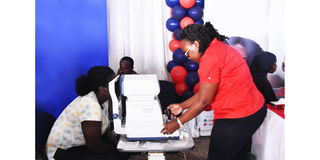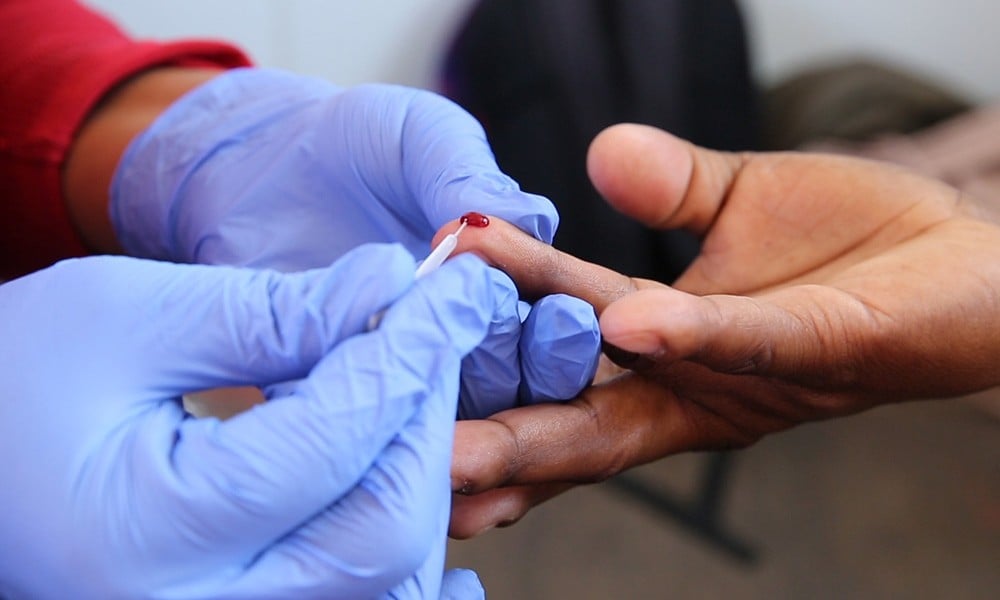Prime
Medical tests you should go for this year

Seeing a doctor regularly ensures problems are detected early, giving you a chance at getting early and effective treatment. PHOTO | FILE
What you need to know:
- Regular annual checkups are important for a number of reasons. Seeing a doctor regularly ensures problems are detected early, giving you a chance at getting early and effective treatment.
Although we are 50 days into the year, it is important that you do some vital body checks that would help you catch some common non-communicable diseases early. Once a disease or health issue is diagnosed early, this gives you a better chance of beating that illness since early treatment increases your chances of survival. Some of the tests you must do include the following:
Body Mass Index (BMI).
Dr Franklin Wasswa, a general practitioner, says the most efficient way to determine if someone is overweight or obese is by calculating their BMI. This is an estimate of body fat that compares a person’s weight to their height.
“To determine your optimal weight, you will need to calculate BMI, which is an estimate of body fat based on both height and weight. It is calculated by dividing weight (in kilogrammes) by height squared (in metres). A BMI of 18.5 to 24.9 is considered optimal, while anything outside this range is deemed unhealthy. Adults aged 20 years and older are advised to aim for a BMI of between 22 and 23,” Dr Wasswa says.
If your BMI is less than 18.5, you are underweight. If it is between 18.5 but less than 25, it falls within the healthy weight range. If your BMI is between 25.0 and 30, it falls within the overweight range. If your BMI is 30.0 or higher, then you are obese.
“For children aged two years and older as well as teens, BMI uses weight and height, but also considers sex and age. Instead of using a specific number such as the BMI charts for adults, the BMI for children and teens is listed as a percentage. This percentage indicates a child’s BMI in relation to those of other children of the same sex and age,” Dr Wasswa says.
Eye test
Glaucoma is a group of eye diseases that gradually damages the optic nerve and may lead to blindness as one ages. Glaucoma is caused by high pressure within the eye. There are also other eye diseases that come with age.
“It is, therefore, important to find and treat glaucoma and other eye problems before they damage the optic nerve. Eye tests for glaucoma and other eye problems are based on age and personal risk and this determines the frequency of these tests,” says Dr Wasswa.
According to the World Health Organisation (WHO), “Cataracts and uncorrected refractive errors are estimated to be the leading causes of vision impairment, although other causes for vision impairment cannot be ignored.
Age-related macular degeneration, glaucoma, long standing systemic conditions such as diabetes which causing diabetic retinopathy, infectious diseases of the eye and trauma to the eye are all equally important causes for vision impairment that need to be addressed.”
“Those younger than 40 years should visit an optician every two to four years, one to three years for those between 40 and 54 years, one to two years for those aged between 55 and 64 and every six to 12 months for those above 65,” Dr Wasswa says.
He adds that many children today suffer sight problems because they spend a lot of time indoors using electronic gadgets. Poor sight usually affects their performance in class. The doctor therefore, advises parents to take their children for a routine eye checks.
Oral check
Oral diseases are among the most common non-communicable diseases worldwide. They include dental caries, gum disease, tooth loss, oral cancer (cancers of the lip, other parts of the mouth and oropharynx), oro-dental trauma, noma and birth defects such as cleft palate.
It is important that adults visit the dentist at least once a year to have their dental problems solved.
Many children, because their diets are filled with foods that contain artificial sugars, develop several dental problems and must be taken to see a dentist at least twice a year.
Cancers
Cancer is one of the leading causes of death globally yet interventions such as screening and early diagnosis can aid timely treatment, increasing one’s chances of making a full recovery.
Late diagnosis means the disease has advanced, sometimes irreversible, very expensive to treat, loss of productivity and inability to provide for the family. By avoiding to go for medical checkups, many rob themselves of the chance of an early diagnosis.
Dr Fred Okuku, an oncologist at Uganda Cancer Institute, says prostate cancer is the leading cause of death among men in Uganda yet so many of them do not present with any signs and symptoms of the cancer.
“Prostate cancer is the leading cause of cancer deaths among men in Uganda at an increasing rate of 5.2 percent annually but, out of all the men who develop the cancer, only 15 percent show signs and symptoms of the disease,” says Dr Okuku.
For this reason, he advises men above 45 years, who are prone to an enlarged prostate to go for a Prostate Specific Antigen (PSA) test. Also, men between 20 and 54 years are commonly affected by testicular cancer yet it can be treated once detected early.
Testicular exams are typically part of a man's routine check-up. Doctors recommend that men take a few minutes every month to do self-exams to look and feel for any hard lumps or nodules (smooth rounded masses) or any change in the size, shape, or consistency of their testicles.
Breast and cervical cancer are also common and it is incumbent upon women to do routine breast cancer examinations as well as a Pap smear test to help determine if one has cervical cancer.
“All women of reproductive age should do a pap smear, especially if they are sexually active. This because these women are at risk of catching the sexually transmitted Human Papilloma Virus (HPV), which causes 99 percent of the cases,” Dr Jackson Joseph Tabuley, an obstetrician and gynaecologist at Nakasero Hospital in Kampala, says.
Hypertension
“Chances of getting high blood pressure are tied to age, weight and lifestyle, ” Dr Vincent Karuhanga, a general physician at Friends Poly Clinic, says. Many people older than 35 years may have high blood pressure and not know it.
Blood pressure readings give the pressure in your arteries when your heart beats and the pressure between the beats. Normal blood pressure is less than 120 over less than 80 (<120/<80) mm Hg.
This disease is treatable but changing your diet and lifestyle through regular physical activity can make a difference. If not treated, hypertension can lead to heart disease, stroke and kidney failure.
HIV test
HIV is the virus that causes Aids and treatment can keep HIV infection from turning into Aids. When one is screened early, the disease can be treated with antiretroviral drugs (ARVs), although it is not curable. However, with treatment, one is able to live a normal and productive life.
“An HIV test looks for antibodies to HIV in a blood sample. If you think you may have been exposed to HIV, it is advisable to go for the test. It is also important to note that using latex barriers such as a condom is necessary to avoid getting HIV and other sexually transmitted infections,” Dr Karuhanga says.
Diabetes
As we age, many men and women gain a lot of weight and so, many suffer from diabetes without getting any signs and symptoms. However, uncontrolled diabetes can lead to heart disease and stroke, kidney disease, blindness from damage to the blood vessels of the retina (shown here), nerve damage, and impotence.
If found and treated early, these complications can be avoided. It is important for one to eat a healthy diet, engage in exercise, and plan to lose weight in order to manage diabetes.
Dr Karuhanga says, “A glucose test is done in a fasting state. Healthy adults should take the test every three years starting at age 45. Some people, including those with high cholesterol or high blood pressure, should start testing earlier and more often.”
The Centers for Disease Control and Prevention (CDC) states that by monitoring your blood sugar, you will know what raises or lowers your blood sugar and work on the best care plan.
Cholesterol
Cholesterol, the waxy, fat-like substance made in the liver is needed for making cell walls, tissues, hormones, vitamin D and bile acid in the body. However, high levels can lead to build up of fat and other substances, forming deposits called plaque in the blood and blood vessels.
The plaque can make the arteries narrow, thus increasing one’s risk of suffering a heart attack, stroke and other heart conditions. Testing for cholesterol levels enables a person to know if they are at risk of developing heart disease.
If there is too much cholesterol in the blood, the doctor may recommend treatment to lower cholesterol levels and reduce the risk of heart disease.




